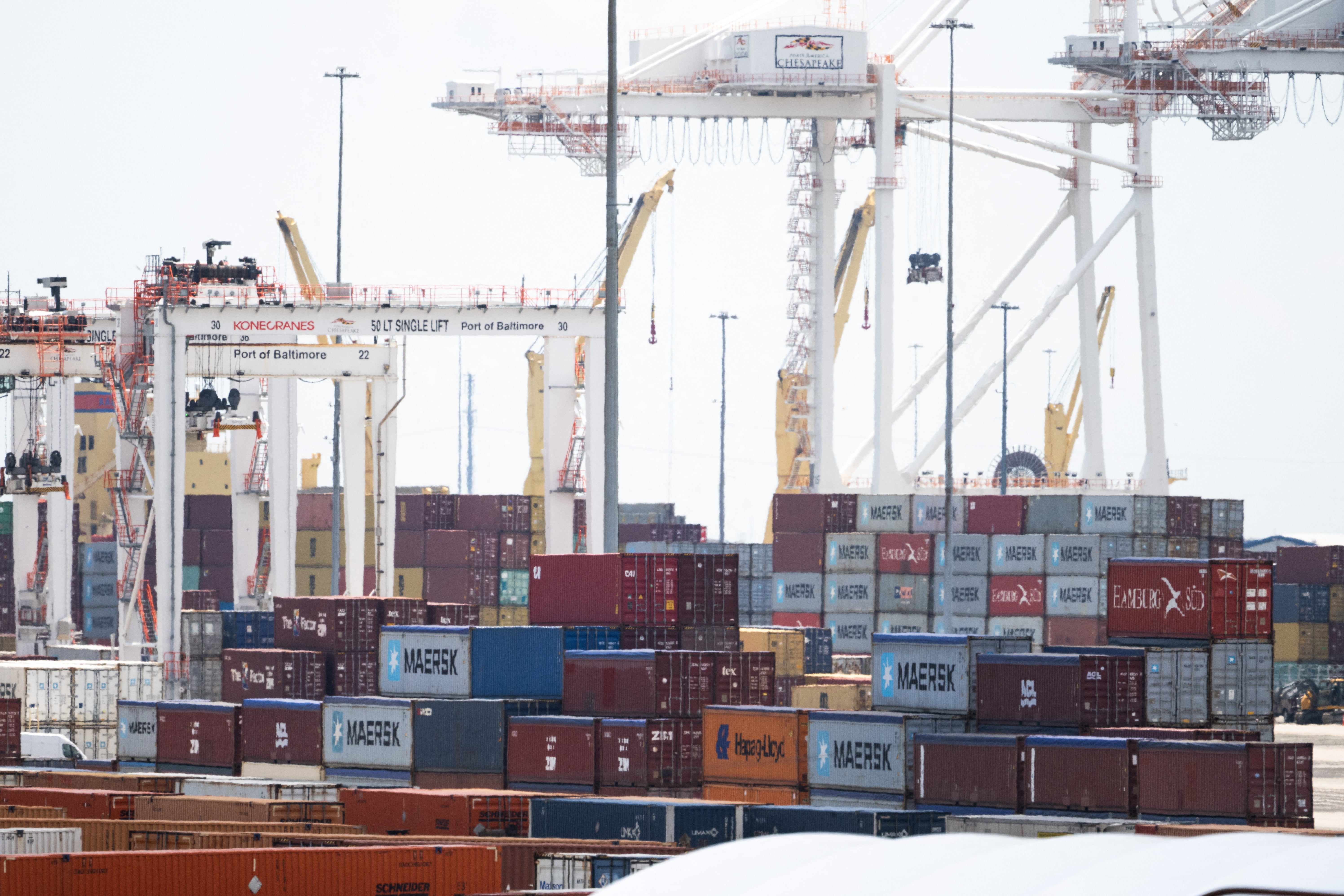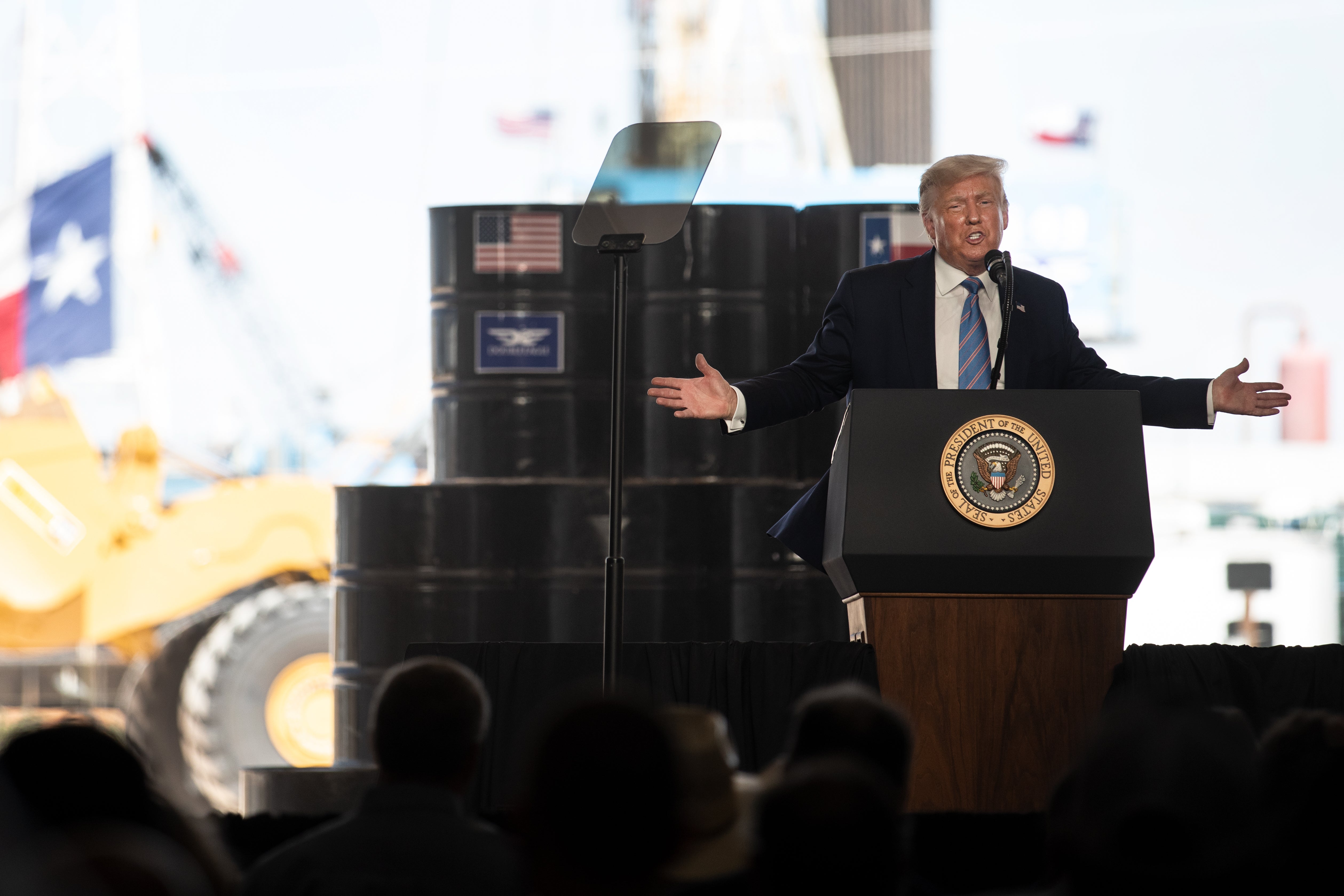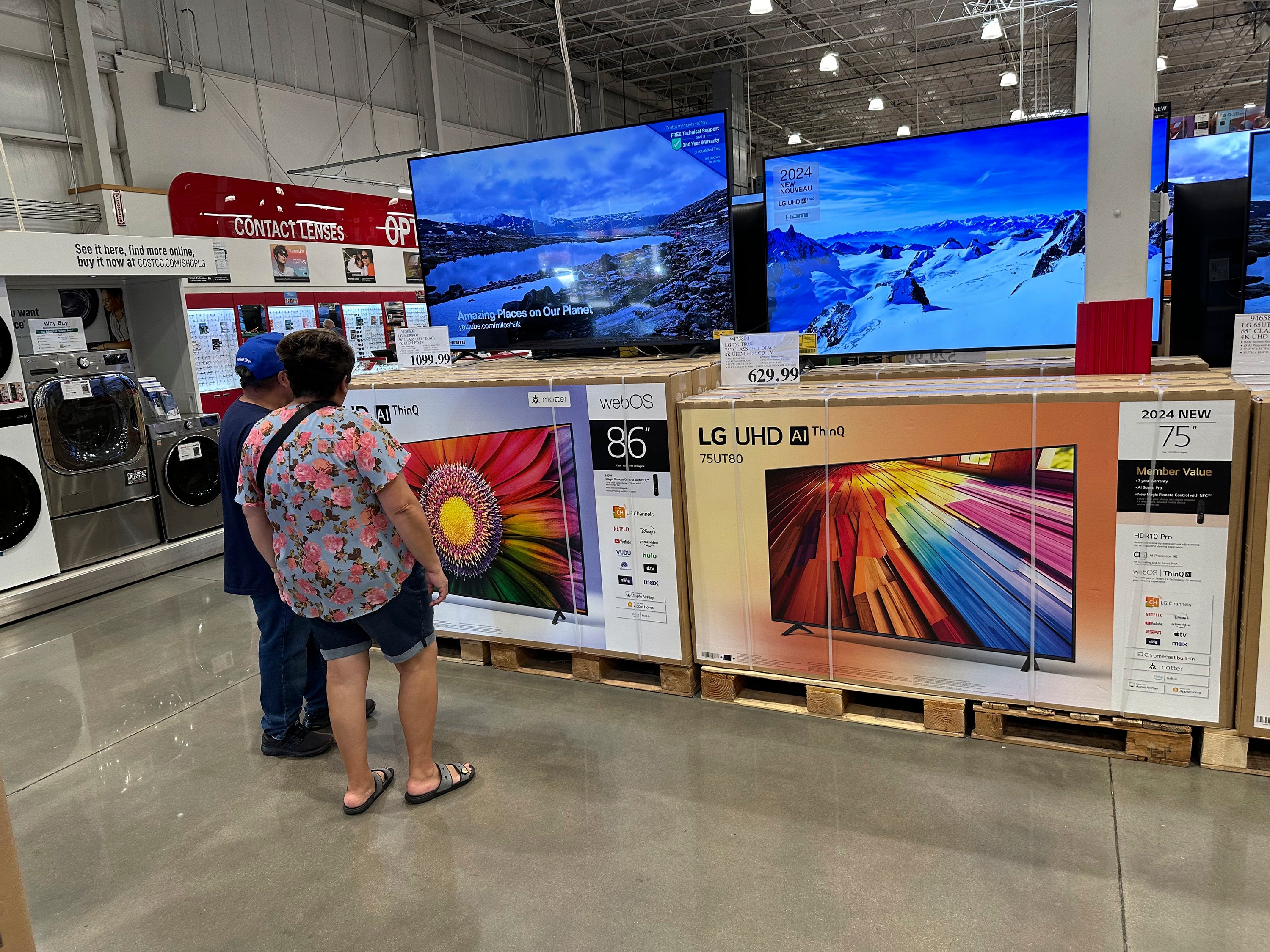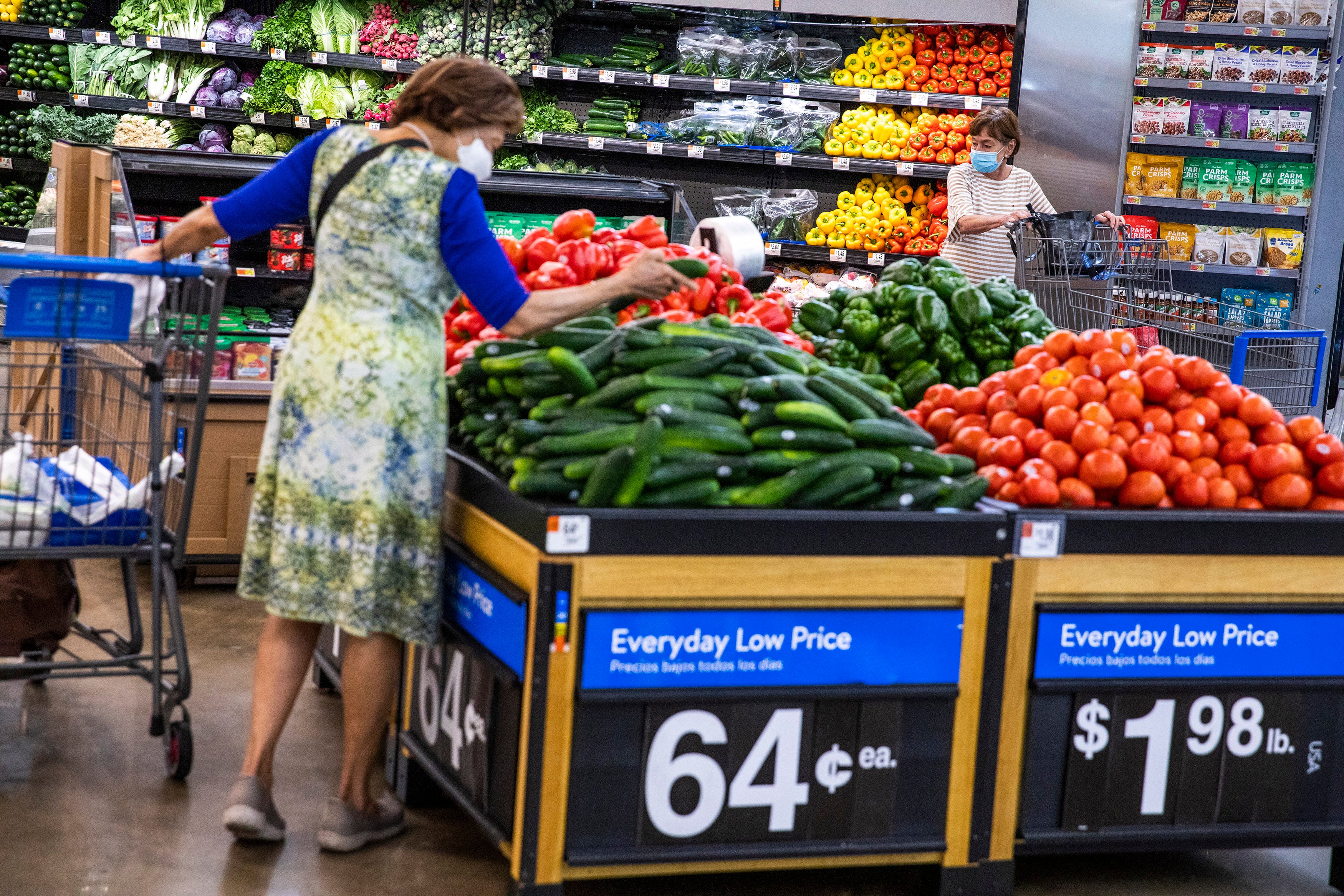How Trump’s tariffs on Mexico, Canada and China could impact U.S. consumers
Canada, Mexico and China are the U.S.’s three largest trade partners
Your support helps us to tell the story
From reproductive rights to climate change to Big Tech, The Independent is on the ground when the story is developing. Whether it's investigating the financials of Elon Musk's pro-Trump PAC or producing our latest documentary, 'The A Word', which shines a light on the American women fighting for reproductive rights, we know how important it is to parse out the facts from the messaging.
At such a critical moment in US history, we need reporters on the ground. Your donation allows us to keep sending journalists to speak to both sides of the story.
The Independent is trusted by Americans across the entire political spectrum. And unlike many other quality news outlets, we choose not to lock Americans out of our reporting and analysis with paywalls. We believe quality journalism should be available to everyone, paid for by those who can afford it.
Your support makes all the difference.Oil, toys, vegetables and electronics are just some of the items imported to the U.S. from Mexico, Canada and China that could cost Americans more under Donald Trump’s proposed tariffs.
Trump has implemented an additional 10 percent tariff on imports from China and while the sweeping 25 percent tariffs on Canada and Mexico have been paused, they could take effect if the countries do not comply with Truump’s demands for stricter border security.
Though tariffs are designed to promote domestic production and purchasing by taxing imported goods, the increase in cost typically falls on consumers, not foreign governments. Numerous economic experts have warned that Trump’s tariffs on goods from those three countries could lead to price spikes and inflation — a concern shared by many voters who said they backed Trump.
The U.S. imports a host of goods from Canada, Mexico and China directly as well as supplies for products made in America. Here’s what resources, materials or products come from those countries:

Crude Oil
Canada is the largest supplier of crude oil to the U.S. with more than 3.8 million barrels per day, or 60 percent of U.S. crude oil imports, coming from its northern neighbor.
Although the U.S. produces large quantities of crude oil every day, it makes more economic sense to import it. Crude oil produced in the U.S. is considered “light” compared to the “heavy” oil produced in Canada and the Middle East.
This means the U.S. relies on imports for “heavy” oil. Importing from Canada, which is close by and doesn’t require as much transportation as other countries such as those in the Middle East, makes it more accessible.
Gasoline is made from crude oil and price spikes in oil can lead to more pain at the pump.

“A 25% tariff on Canadian oil would have huge impacts to #gasprices in the Great Lakes, Midwest & Rockies, which are major markets where refiners process Canadian oil. You can’t simply process different oil overnight. It would take investments/years. More U.S. supply wouldn’t help,” warned gas price expert Patrick De Haan on X.
De Haan, an industry leader with GasBuddy.com, further warned that oil refineries in the U.S. have shrunken over the last four years - making it harder for the U.S. to increase its production in gasoline.
“Total impact to #gasprices in these areas could be 25-75c/gal, dependent on season and refining factors as well if tariffs go through,” De Haan added.
Motor vehicles and parts
Mexico is the largest exporter of vehicles, vehicle parts and vehicle accessories to the U.S. than any other country making up 27 percent of all imports from Mexico.
Importing auto parts abroad and then assembling them in the U.S. is a cheaper alternative than manufacturing and assembling domestically. Tariffs would increase the cost of most cars, though it's not clear how much.
Patrick Anderson, chief executive of Anderson Economic Group, a consulting firm in Michigan, told the New York Times: “There is probably not a single assembly plant in Michigan, Ohio, Illinois and Texas that would not immediately be affected by a 25 percent tariff.”
Tariffs “would spell disaster for the U.S. auto industry,” analysts at Bernstein said in a note to investors, according to the Times. But, they added, they doubt Trump will follow through.
“Given the wide-ranging negative implications for industrial production in the U.S., we expect this is unlikely to happen in practice,” the Bernstein analysts said.
Electronic Equipment
More than a quarter of U.S. imports from China fall under the electronic equipment, machinery and products category.
These include items such as television sets, smartphones, monitors, projects and more. All of them could see price increases if tariffs are imposed and passed on to consumers.
Mexico too is also a major producer of electronics not only in the U.S. but across the globe.
“Mexico has over 730 plants manufacturing audio and video, telecommunications, computer equipment, and related parts. It is the largest exporter of flat-screen TVs in the world, the third-largest exporter of computers, and the eighth-largest producer of electronics in the world,” consulting firm IVEMSA, according to PC Mag.

Sugar
Among Mexico’s largest exports to the U.S. are sugar and sweeteners. The U.S. spends more than $700 million importing sugar directly from Mexico.
More than 445,000 metric tons of sugar were imported to U.S. ports from Mexico between October 2023 and September 2024.
Fresh vegetables and fruit
The U.S. spends more than $20 billion annually importing horticultural agricultural products from Canada and Mexico. Tomatoes, avocados, peppers, strawberries, lemons, limes, broccoli, cauliflower and so much more produce is imported into the U.S. from Mexico.
Canada supplies the U.S. with mushrooms, potatoes and more.
All of those items could see price increases with tariffs. That would hit American consumers hard as grocery prices have already risen by about 25 percent since 2020. Many voters used groceries as an example of how inflation impacted their day-to-day lives, so another price increase in food could be devastating to households.
Meat
Beef and beef products are often imported from Canada and Mexico and the amount imported has only risen over the last three years.
An analysis by Third Way found that the average cost of 3lbs of frozen beef in America is $26.67. A 10 percent tariff on all goods, with a 60 percent tariff on goods from China, would lead to a price jump for the same meat to $27.76.

Toys
China’s third largest export to the U.S. are toys, games and sports requisites because they are cheaper to manufacture overseas.
Though the idea of tariffs is to promote domestic production, the chief executive of Basic Fun, the maker of Fischer-Price and Care Bears, told The New York Post there is “no manufacturing base for toys in the U.S. anymore.”
The same analysis by Third Way estimated the cost of an average board game going from $14.87 to $17.85 under Trump’s tariffs.
Wood, plastics and other materials
All three countries provide the U.S. with an abundance of materials like wood, plastics, iron, textiles and more.
Some companies have already warned that tariffs on materials could lead to a spike increase, even for products assembled in America.
“People generally don’t understand how dependent the global economy is for those kinds of intermediate goods, raw materials, that we sort of take for granted,” Willy Shih, an economist at Harvard Business School, told PackagingDive.com.
“They need to understand where their exposures are,” he said. “A lot of times, it’ll be in surprising areas, because your exposure may be at your supplier level. Your tier two supplier may have exposure to tariffs and you may not know, but the first thing you got to do is understand all that.”
Pharmaceuticals
Trump indicated he plans to put a tariff on pharmaceuticals while speaking with reporters on Friday, January 31 – though he did not elaborate how much he would tariff imported pharmaceuticals or where they would originate.
The U.S. spends more than $2 billion importing essential medications from China.
A large portion of U.S. pharmaceutical imports also come from Mexico, Canada and India.
Join our commenting forum
Join thought-provoking conversations, follow other Independent readers and see their replies
Comments